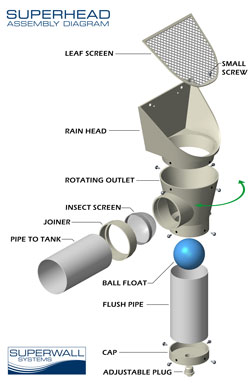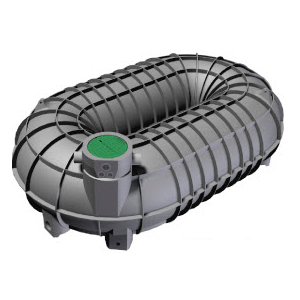Rainwater is a wonderful free resource we can use to keep our gardens green and blooming, to live a sustainable life, to reduce costs and our dependence on mains water, or to supply all our essential water if we live in a rural area without mains supply.
Whether you are using your rainwater tank to supply your washing machine and toilet cisterns, or all of your water requirements, it is important to ensure the water is as clean and free from impurities as possible. This is especially important if you live in an urban environment with its inevitable pollution.
 Most importantly, start by purchasing a quality tank and accessories such as pumps and filters to suit your requirements, and then have the tank installed, according to the manufacturer’s instructions, by a licensed plumber.
Most importantly, start by purchasing a quality tank and accessories such as pumps and filters to suit your requirements, and then have the tank installed, according to the manufacturer’s instructions, by a licensed plumber.
Ensure your gutters and down pipes are kept free from leaf litter and other debris, and check and clean the inlet mesh regularly. Installation of a First Flush Diverter and a filter between your pump and your house is the next step in ensuring that you minimize any sand and grit which might otherwise get into your toilets or washing machine along with the rainwater you have collected.
Check your inlet strainer regularly and your pump and filter cartridge every 3 months. Depending on the amount of rainwater you use, you should replace the filter cartridge every 6 – 9 months and clean the strainers to keep them free of dust and leaf litter. If you have purchased a pump cover, this will help to keep your pump clean and working efficiently as well as reducing the noise of the pump motor.
If you have an underground tank with mains back-up, get your plumber to check your back flow prevention valves every 12 months.
When rainfall is scarce and you think the quality of the water in your tank has deteriorated, this might be due to a buildup of sludge because the tank has not been regularly flushed out with fresh rainwater. Even when your area has had reasonable rainfall, if your tank water is not looking clean and clear, or has an unpleasant smell, check the inside of the tank to ensure that there has not been a build up of sludge. Ideally, checking the bottom of the tank every 2 or 3 years should be part of a regularmaintenance schedule. While the water in the tank is being continually refreshed with rainfall run-off, and therefore with oxygen, this only applies to the zone above the outlet. Even with filters and strainers, sometimes microscopic particles of organic matter can enter the tank and accumulate on the bottom. This can become a layer of sludge because water at the bottom of the tank below the level of the outlet is an anaerobic zone, which means that it is not oxygenated. Too much sludge can affect the quality of your tank water, and may need to be removed.

This is a 5,000 litre poly underground rainwater tank. Underground tanks require less or no maintenance when installed, except of regular cleaning of the fabric filters inside.
A regular maintenance program for your tank and pump can save you time and money, and you might be able to arrange this with the plumber who installed your tank and pump. Otherwise, there are contractors in all states who can clean and/or repair your tank when necessary.
Your initial investment in a rainwater tank will provide many years of free, healthy water. All it will require from you is a small amount of time looking after it.



Leave A Comment